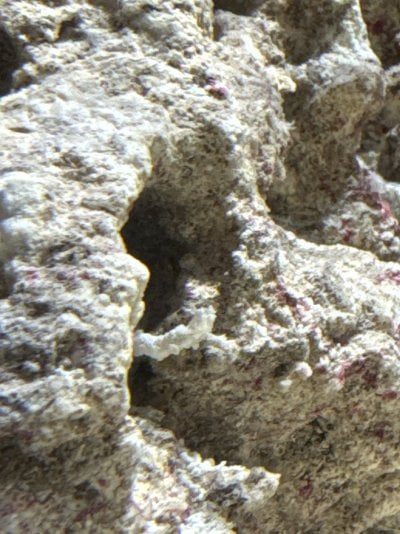Also looks very similar to a false spaghetti worm?
Navigation
Install the app
How to install the app on iOS
Follow along with the video below to see how to install our site as a web app on your home screen.
Note: This feature may not be available in some browsers.
More options
You are using an out of date browser. It may not display this or other websites correctly.
You should upgrade or use an alternative browser.
You should upgrade or use an alternative browser.
No clue what this thing is
- Thread starter BristleWormHater
- Start date
- Tagged users None
Ok I'll just leave it alone then. @ISpeakForTheSeas
False Spaghetti Worms are presumed to be a Phyllochaetopterus species - they're from the Chaetopteridae family (so, they're a Chaetopterid worm).Also looks very similar to a false spaghetti worm?
@ISpeakForTheSeas I heard spoinid worms sting corals, is that true for parchment worms as well?
Spionids can't sting corals, but some species (Coral-boring Spionid Worms) will bore through them and live inside them; in small numbers, this isn't a big issue, but it our tanks these species can reproduce and grow to huge populations, and these huge populations can destroy the corals from the inside out.@ISpeakForTheSeas I heard spoinid worms sting corals, is that true for parchment worms as well?
For Chaetopterid worms, since they live in sand tubes and not in rock, they wouldn't bore through the corals, so they're not going to cause these sorts of issues.
Okay, here’s a little update too he built out his tube with my sand now he’s poking out of the rock. I’ve also spotted three more of these around the tank, but all the others are in the sand.Spionids can't sting corals, but some species (Coral-boring Spionid Worms) will bore through them and live inside them; in small numbers, this isn't a big issue, but it our tanks these species can reproduce and grow to huge populations, and these huge populations can destroy the corals from the inside out.
For Chaetopterid worms, since they live in sand tubes and not in rock, they wouldn't bore through the corals, so they're not going to cause these sorts of issues.

Interesting - I'd keep an eye on them and probably start removing if it looks like you're getting too many of them popping up.
Similar threads
- Replies
- 4
- Views
- 108
- Replies
- 7
- Views
- 337
- Replies
- 12
- Views
- 320
- Replies
- 2
- Views
- 98
















